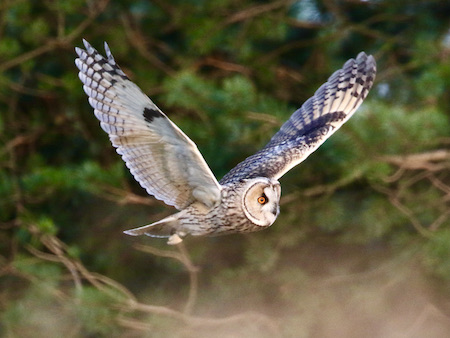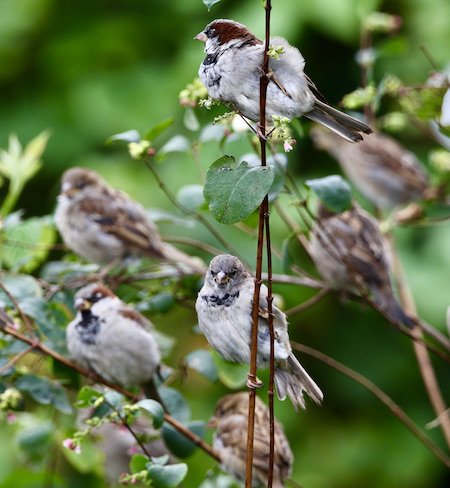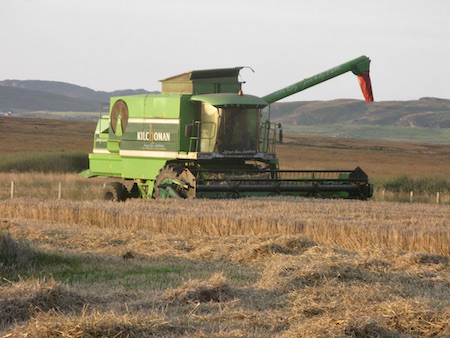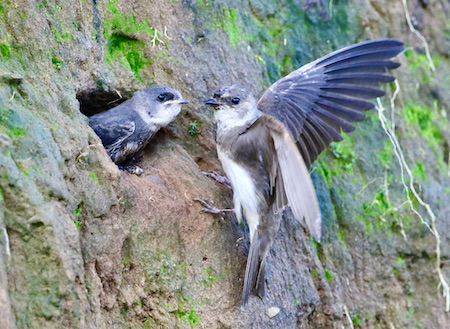September 26, 2021 at 11:10 am
 There are days in the hills when all you see are a couple of Meadow Pipits. Then there are other days when it all comes good and the 12th September was one such day.
There are days in the hills when all you see are a couple of Meadow Pipits. Then there are other days when it all comes good and the 12th September was one such day.
I had been checking the purple heather for Red Grouse when all of a sudden a male Hen Harrier came into view. It was a bird on passage and soon moved off south but a Pennine Hen Harrier is always a good sighting.
At dusk it got even better when a Long Eared Owl came into view and hunted the moorland edge.
Better still was to follow as a Barn Owl commenced hunting the same area as the Long Eared Owl.Two Owl species in view at the same time is as good as it gets – check the gallery photos.www.facebook.com/gordonyateswildlife
September 19, 2021 at 4:32 pm
 This weeks blog photo is of the many House Sparrows that have fledged around the garden this year. In fact we had one count of more than thirty in August. However, gone are the glory days of mid-summer and from now on they cannot relax for at any moment a Sparrowhawk might strike. One such time was last week when, sadly, we had one less to feed in the future. gallery www.facebook.com/gordonyateswildlife
This weeks blog photo is of the many House Sparrows that have fledged around the garden this year. In fact we had one count of more than thirty in August. However, gone are the glory days of mid-summer and from now on they cannot relax for at any moment a Sparrowhawk might strike. One such time was last week when, sadly, we had one less to feed in the future. gallery www.facebook.com/gordonyateswildlife
September 12, 2021 at 4:06 pm
 In all our 112 visits to Islay we have never previously been on the island when Barley was harvested. All that was to change last week when every available machine was working almost day and night to harvest Islay’s precious crop – its Barley. The weather all week was exceptional with no rain or wind and some magnificent sunsets.
In all our 112 visits to Islay we have never previously been on the island when Barley was harvested. All that was to change last week when every available machine was working almost day and night to harvest Islay’s precious crop – its Barley. The weather all week was exceptional with no rain or wind and some magnificent sunsets.
It was not a wildlife holiday but it is impossible to visit Islay and not be impressed by what you see. Hen Harriers, Ospreys, wading birds and hundreds of finches are all around you. This year the heather was spectacular and the Rowan berry crop exceptional. Oh to return in October for the Autumn migrants!! more photos see www.facebook.com/gordonyateswildlife
September 6, 2021 at 2:41 pm
 When our Sand Martins arrived in late April and early May they were faced with ice-cold north winds and snow. Sadly at my local colony many disappeared and presumably died. The big numbers never returned but those that did survive have now bred into early September. This weeks gallery photos were taken in deep shade a couple of weeks ago and those young will now be heading south for winter. www.facebook.com/gordonyateswildlife
When our Sand Martins arrived in late April and early May they were faced with ice-cold north winds and snow. Sadly at my local colony many disappeared and presumably died. The big numbers never returned but those that did survive have now bred into early September. This weeks gallery photos were taken in deep shade a couple of weeks ago and those young will now be heading south for winter. www.facebook.com/gordonyateswildlife
 There are days in the hills when all you see are a couple of Meadow Pipits. Then there are other days when it all comes good and the 12th September was one such day.
There are days in the hills when all you see are a couple of Meadow Pipits. Then there are other days when it all comes good and the 12th September was one such day.

 This weeks blog photo is of the many House Sparrows that have fledged around the garden this year. In fact we had one count of more than thirty in August. However, gone are the glory days of mid-summer and from now on they cannot relax for at any moment a Sparrowhawk might strike. One such time was last week when, sadly, we had one less to feed in the future. gallery www.facebook.com/gordonyateswildlife
This weeks blog photo is of the many House Sparrows that have fledged around the garden this year. In fact we had one count of more than thirty in August. However, gone are the glory days of mid-summer and from now on they cannot relax for at any moment a Sparrowhawk might strike. One such time was last week when, sadly, we had one less to feed in the future. gallery www.facebook.com/gordonyateswildlife In all our 112 visits to Islay we have never previously been on the island when Barley was harvested. All that was to change last week when every available machine was working almost day and night to harvest Islay’s precious crop – its Barley. The weather all week was exceptional with no rain or wind and some magnificent sunsets.
In all our 112 visits to Islay we have never previously been on the island when Barley was harvested. All that was to change last week when every available machine was working almost day and night to harvest Islay’s precious crop – its Barley. The weather all week was exceptional with no rain or wind and some magnificent sunsets. When our Sand Martins arrived in late April and early May they were faced with ice-cold north winds and snow. Sadly at my local colony many disappeared and presumably died. The big numbers never returned but those that did survive have now bred into early September. This weeks gallery photos were taken in deep shade a couple of weeks ago and those young will now be heading south for winter. www.facebook.com/gordonyateswildlife
When our Sand Martins arrived in late April and early May they were faced with ice-cold north winds and snow. Sadly at my local colony many disappeared and presumably died. The big numbers never returned but those that did survive have now bred into early September. This weeks gallery photos were taken in deep shade a couple of weeks ago and those young will now be heading south for winter. www.facebook.com/gordonyateswildlife